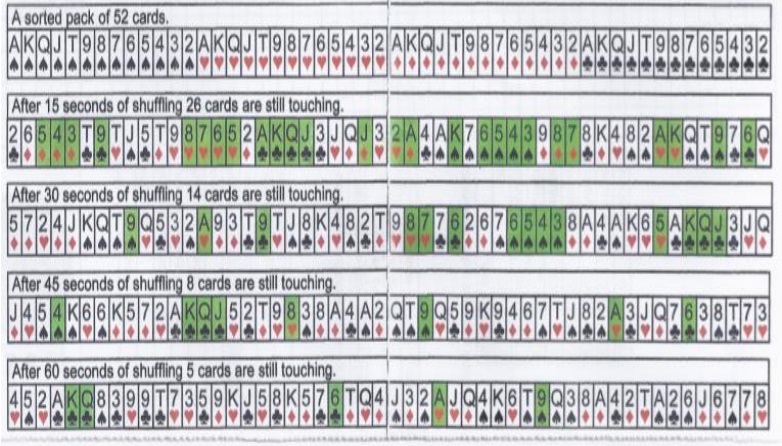Current Trends
A majority of clubs now use computer/machine dealt hands.
All National and International competitions are administered using Computer dealt hands.
The main advantages of computer/machine dealt hands are
1. Hands are “Better Shuffled”
Computer generated hands are more random generally resulting in more distributional hands.
To create a random deal manually, players must shuffle the deck at least seven times to guarantee that the cards are properly mixed. Inadequate shuffling often leads to "flatter" distributions.
2. Board accuracy
If cards are put back incorrectly then reference can be made to a hard copy of the hands to reinstate.
3. Ability to review hands
Hands can be available at the end of a session to take away with a printed hand score.
Hands can be downloaded from the club’s website.
Makeable and optimum contracts are shown.
Hand Statistics, i.e. Average HCP, singletons, voids etc. are available for review.
Hands can replayed using the latest software, playing from any of the four positions, and experimenting with different leads.
Take a look at the image below. From a new pack of cards, you will see the results of human shuffling for every 15 seconds of shuffling. It takes around 2 minutes of shuffling to completely randomise the cards so that no 2 cards from the previous deal are touching.
On average the most people shuffle for is less than 15 seconds and some of us are better than others.
Sophisticated techniques are neither random nor any better. For example
- Pre dealing into piles before and or after the shuffle
- The “rifle” shuffle. rifle shuffling is no better because after 8 perfect rifle shuffles the deck is back to where it started!
Computer dealing truly randomises hands. This is why some people think the hands are “not fair”. It’s simply that we have been brought up in a bridge world of manually shuffled hands which tend to be flatter and not randomly distributed. This does mean more instances of long distributions, singletons and voids, but statistically you should have the same chance of picking up 13 spades as a 1 NT hand.
Reg Hull – March 2016
Many thanks to Ian Dalziel for producing the table above and providing the content in
Mr Bridge magazine No159 March 2016

|